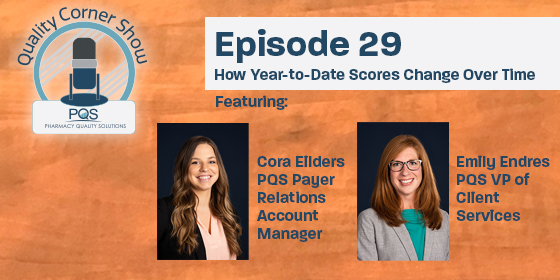
 In last month’s article, we focused on how your pharmacy team can understand data from the 2020 calendar year to determine priorities for 2021. Getting off to a “fast start” is a sure-fire way to put your pharmacy on the path to success. While your team focuses on adherence, let’s review some details about the adherence measure evaluation that you see in EQuIPP®. That calculation methodology is the “Proportion of Days Covered” (PDC).
In last month’s article, we focused on how your pharmacy team can understand data from the 2020 calendar year to determine priorities for 2021. Getting off to a “fast start” is a sure-fire way to put your pharmacy on the path to success. While your team focuses on adherence, let’s review some details about the adherence measure evaluation that you see in EQuIPP®. That calculation methodology is the “Proportion of Days Covered” (PDC).
When thinking about a patient being “adherent” in your EQuIPP® data, first recognize that a patient does not need to be perfect and pick up their medication the same day every month to be considered adherent! While the exact threshold for a patient to be adherent may differ for some specialty pharmacy measures, most of the PDC measures will consider a patient adherent if they score 80% or better. To think about it in more simple terms, if a patient has ten 30-day supplies of their medication billed to their insurance over the course of twelve months, they should be considered adherent (10/12=83.33%).
There may be some intricacies to the PDC measures you see in EQuIPP®, let’s help explore this context:
- All measures in EQuIPP® are based on what is billed to the patient’s insurance during the measurement period. To keep those adherence scores improving, make sure you are capturing all claims through adjudication to the patient’s insurance coverage!
- While most programs will look to evaluate a patient’s adherence for the calendar year (January 1 – December 31), the patient starts to be evaluated for adherence beginning with the day of their first fill.
- For example, if patient Joe Smith fills their atorvastatin for the first time on Monday, January 18, 2021, their adherence evaluation for the 2021 year would begin January 18th and continue until the last day of the measurement period (unless the patient’s enrollment with the plan ceases or they meet a measure’s exclusion criteria).
- Because the patient first filled on January 18th, they will have 348 days in the calendar year which are evaluated for the PDC evaluation (the first 17 days of January are not included because they had not had a prescription fill to start the evaluation). 348 X 80% = 278.4 days. That means the patient will need to have 279 days of medication covered during the year.
- Remember that the PDC evaluation is over a measurement period. That means you may see patients in your outlier list that filled a prescription recently, maybe they even picked up a medication yesterday. While the patient may have recently filled their medication, the low PDC score indicates this patient has historically been non-adherent. Therefore, your pharmacy team should make sure to still follow up with this patient. Years of medication adherence research show that while there are many factors for medication nonadherence, prior history of nonadherence is one of the best indicators for future nonadherence. If you see a patient outlier for an adherence measure, think about what you can do to follow up with that patient so they are picking up their next fill on time.
- The adherence measures also evaluate a class of medication therapies. For example, the Cholesterol PDC measure evaluates adherence for statin therapies. If a patient is taking atorvastatin but begins to experience side effects, you and the patient may work with the prescriber to switch to a lower dose or to a different medication like simvastatin. These fills of the new dosing or new medication in the same class of therapy DO count towards the adherence calculation! As the patient’s pharmacist, make sure you are always reviewing the appropriateness of therapy with the patient and if a switch in medication is necessary, that may help improve that PDC score.
Finally, when it comes to improving adherence, keep all the tools in your adherence toolbox ready. Sometimes enrolling a patient in medication synchronization is just what they need. Other situations may call for compliance packaging, or they may need to switch to a medication that is more affordable. There is no “silver-bullet” to fix a patient’s nonadherence. Work with your patients to consider all adherence interventions that could work and select the right one(s) that apply for the patient at this time. Then, be sure to follow up with the patient as sometimes the first intervention isn’t enough to get them back on track.
Related to today’s article, we highly recommend the following resources from the EQuIPP® Educational Video Library, located in the Resources Tab in EQuIPP® or on YouTube:
- Calculating Medication Adherence Based on Proportion of Days Covered
- Quick Tips on How to Improve Performance on Adherence Measures
If your pharmacy needs to confirm how to access EQuIPP®, or if you have any questions about the data for your pharmacy – contact us directly! Email support@equipp.org or “click” on the EQuIPP® Support Link at the bottom corner of your EQuIPP® dashboard.








